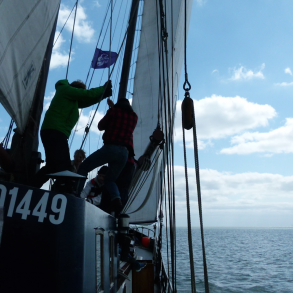
“Progress is impossible without change. And those who cannot change their minds cannot change anything.” – George Bernard Shaw
Most companies strive for innovation, but do not break organisational patterns. Why do you, working in these companies as senior leaders, think that trying to find something new by doing the same will work?
According to a McKinsey study, fewer than 20 percent make use of agility across business units – although practising this organisational agility has brought about an increase in innovation of 80 percent!
Frédéric Laloux conducted research into why and how pioneer organisations run successfully and published the results in his book called Reinventing Organizations in 2014.
What he found was that these organisations at the forefront of their relevant industries are convinced that the current way to manage companies is outdated (and so do I!). They disregarded what they had been taught in business school and sought something more powerful, soulful and purposeful instead.
Although these pioneer companies differ in industry and location, they ended up with the same three fundamental breakthroughs:
- Self-Management: No levels of hierarchy. Authority is distributed.
- Wholeness: Show your complete personality, including emotional and spiritual site. The more life you bring into the company, the more life the company has. An enormous amount of energy and creativity is set free when we can be ourselves.
- Evolutionary purpose: Sense and respond instead of predict and control the future. Because the world has become too big and complex for the latter. The company is a living organism, so listen to where it wants to go and then follow.
This might sound idealistic and anarchistic, maybe even esoteric. But it is not. It is the answer to corporate problems like employee disengagement, poor and slow decision-making and lack of innovation.
And it is called “Teal” consciousness level – or for us here shorter: Teal Model.
“The most exciting breakthroughs of the twenty-first century will not occur because of technology, but because of an expanding concept of what it means to be human.” – John Naisbitt
No worries, it doesn’t get too esoteric and emotional or chaotic 😉
There are well-defined rules to ensure that the company stays on track. Experience shows that the Teal model works when people follow these rules, regardless of company size and industry. Morning Star and Patagonia are an example for Teal organisations. They do not only work well, they are market leaders in their industry.
Tried and tested by LIVEsciences
When we started our business, we decided to leave the traditional top-down management model. From my experience (and shared by my partner Frank Eiselt), it simply strengthens things like slow decision-making, lower customer focus, burnout, frustration. We trusted in the power of codetermination and transparency and became a Teal organisation.
Although I must admit that coming from a traditional organisation in the beginning it felt strange for me as a founder and owner that somebody else took decisions without asking me and spending “my” money on these things.
Still, we founders figured we do not want to create any bottlenecks impeding decisions – or participating in 12 hour meeting marathons to make decisions. I am really grateful that Frank and Steffen were open and actually as enthusiastic as I was and we just tried it.
Although conventionally it would have been up to me as CEO to make some of these decisions, I observed my emotions with it and waited for what would happen – the result was always positive.
Of course I, as many of the leaders in other organisations, really just want to be there, help others and feel like I was needed, but in some situations you simply have to let go. And it feels similarly good or even better at the end from my experience of the past 2 years.
Being human and natural is part of our company culture. Instead of behaving perfectly and “politically correctly” we invite our employees to express their opinion – even if they are in an emotional mood or reveal some unpleasant truths (which can be unavoidable if you want the best for your team or company).
Gathering data is not everything. You can always find data proving one thing or another. So why not also trust in intuition?
Teal is innovative (but not a new model if you look for how long sociocracy models have been around…).
Teal is pushing performance.
Teal is what every company should strive for in our opinion – if it keeps in mind the challenges and how to master them.
In the upcoming weeks I will try to post some more learnings we had in setting up our little Teal company – and also what we learnt from our Big Pharma customers who are going down that road too.
And of course what the key elements to a successful Teal organization are – and it’s not the processes, dashboards, balanced scorecards or all that, what many of the big consultancies will tell you!
This is Part 1 of a series of articles. Part 2 will be republished by Enlivening Edge Magazine soon.
Republished with permission.
Featured Image and some paragraph spacing added by Enlivening Edge Magazine.




